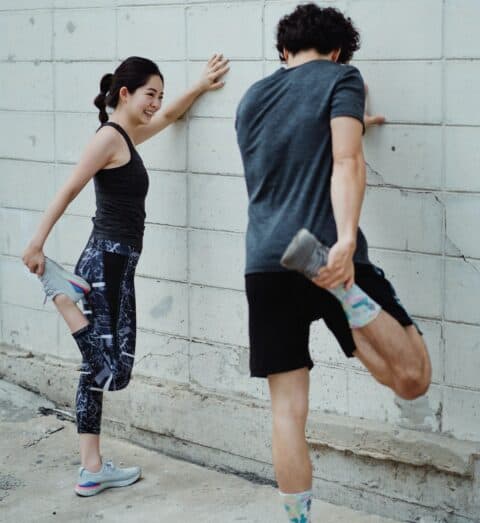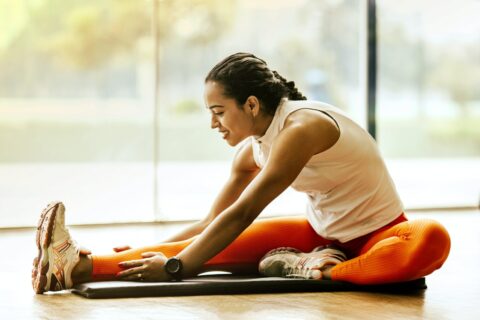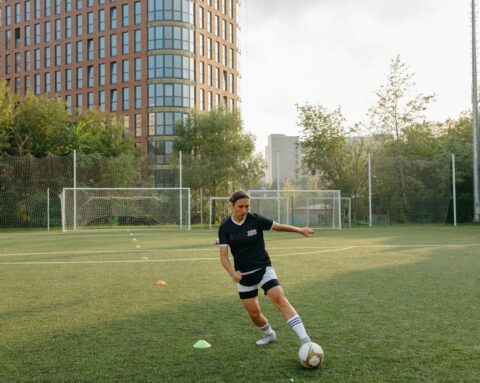Osteoarthritis is a degenerative joint disease that impacts the bone and cartilage within the joint. The ends of our joints are cushions by smooth, rubbery connective tissue called cartilage. The role of this cartilage is to create a smooth and easy movement of the bones that make up the joint and to absorb shock that is created with movement. Over time, cartilage will begin to breakdown as part of the normal degeneration process, however, sometimes other factors will cause some of us to degenerate at a fast rate or to a higher degree than others, which can cause Osteoarthritis. Osteoarthritis affects hundreds of millions of people around the world and is a leading cause of disability. Osteoarthritis can affect any joint in the body, however, it is most commonly seen in the spine, toes, hands, hips and knees.
For osteoarthritis, there are some key symptoms to look out for diagnosis. Symptoms may vary from person to person; however, the most common symptoms are:
Stiff joints that occur after periods of being inactive or are at their most painful early in the mornings, feelings of cracking of grating as well as sound from your joints, painful joints that get worse when you are inactive or after movement, affected joints may suffer a loss of flexibility and a weakness of muscles near joints. You may also notice a change in the appearance of your affected joints such as the development of hard bumps or slight swelling. It may appear that some of your joints are beginning to bend sideways such as the base of your toes or in your finger joints. Osteoarthritis at the base of your big toes can lead to a bunion forming.
Many risk factors contribute to an increased chance of developing osteoarthritis. The most common being the overuse of joints from people that have had repeated stress placed on them through activities such as work where heavy lifting or overusing one muscle group has been required. Another huge risk factor for osteoarthritis is obesity. The excess weight puts massive pressure on joints and causes extreme amounts of inflammation that is very damaging to the joints. If you have a high level of inflammation, then you will likely see a loss in cartilage. It is also very important to monitor joints that have been damaged by other conditions. Family history can also be a large contributing factor. Some examples of people with osteoarthritis are due to strong genetic factors. Additionally, being female also, unfortunately, carries a higher risk of being diagnosed with osteoarthritis.
Osteoarthritis is, unfortunately, incurable, thankfully, there are options to help manage the condition and remove pain to increase comfort. One of the best methods to reduce osteoarthritis is weight loss! Losing weight reduces the pressure on your joints and muscles which is extremely important when it comes to your knees and hips. The great part about weight loss for osteoarthritis is that it carries many other health benefits and you will start to see some results almost immediately regarding pain reduction. Another great at-home remedy to counteracting osteoarthritis is low impact exercise. Low impact exercise strengthens the muscles around your joints and will increase your endurance whilst still making you more stable. Some options for exercise to benefit osteoarthritis include swimming, walking and cycling. If you do, however, happy to experience new pain that lasts for a long period after exercise that is a good indicator that you may have overdone your session. Try to give yourself a couple of rest days and go again with a lesser intensity level.
Two more at-home methods to combat osteoarthritis are getting the right amount of sleep and hot and cold therapy techniques! A lot of people don’t know this but resting your muscles through sleep is one of the best ways to reduce inflammation and swelling! If you are getting enough sleep at night, it will be much simpler for you to manage your pain moving forward. Applying heat and cold therapy to sore joints for 15-20 minutes several times throughout the day is another great way of managing osteoarthritis pain. Heat and cold therapy can compress sore joints to relieve muscle stiffness and pain.
There are many different ways that your therapist at Studio Musculoskeletal can assist you with osteoarthritis. Assistive devices can help relieve stress on your joints. This can be as simple as a brace of a shoe insert that relieves pressure while standing or a walking cane for the opposing leg that is hurt. Acupuncture is another very effective method for reducing pain and improving function for people with osteoarthritis affecting their knees.
If you recognise the symptoms of osteoarthritis early and priorities living a healthy life with strong muscles, you will directly lessen the chance of it developing later in life. Thankfully, if osteoarthritis does occur your therapist at Studio Musculoskeletal will be able to prescribe you all the activities, exercises, assistive options and treatments to ensure that you can live your life to the fullest with as little pain as possible.
Book an acupuncture session today HERE






